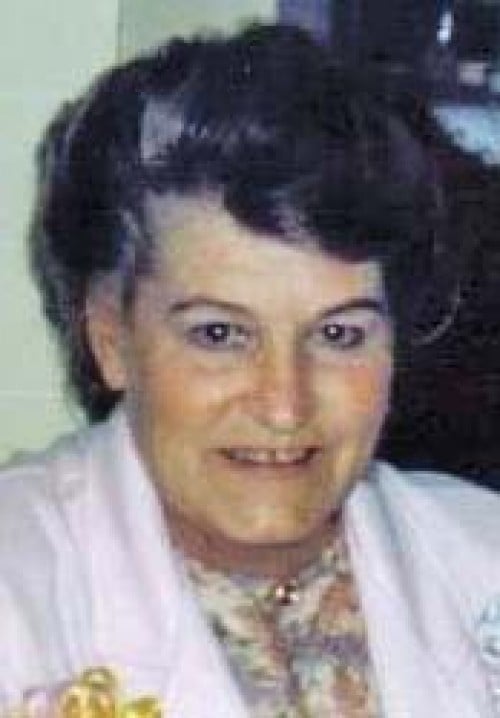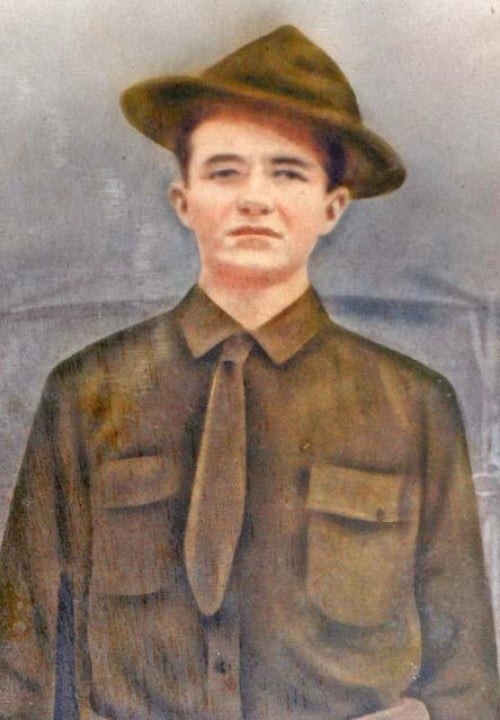
Theotine "Theo" Ulysse Dardar
June 23, 2009
Diana Benoit Toms
June 25, 2009American Legion Post No. 83 in Lockport is trying to solve a 91-year-old mystery.
The post is named in honor of Private Henry J. Robertson, the first Lafourche Parish casualty in World War I.
Legionnaires know Robertson was killed in action June 7, 1918 at age 24 in France. However, his burial site is unknown.
Robertson was not consecrated with a military marker commemorating his service to his country. Post 83 officials want to correct this historical oversight.
“We started this so we could recognize him with an Army plaque for his tomb,” said Eleanor Travirca, president of Post 83.
“That’s when we found out that we weren’t sure where the man is buried,” said Linda Simoneaux, post chairwoman.
About a month ago, the American Legion asked Travirca’s husband, Forrest, to find Robertson’s remains.
As a private investigator, former Post 83 commander and past commander of the American Legion’s Department of Louisiana, Forrest Travirca is well versed in cold cases and military matters. However, finding Robertson is proving more daunting than expected.
“For many years, people assumed he was buried in a tomb marked Harry Robertson,” Travirca said. “But Harry was Henry’s younger brother. He was a World War II veteran. He has a plaque on his grave identifying who he is.”
The Houma-Thibodaux diocese’s archival records at Nicholls State University contained newspaper clippings from the Lafourche Comet and the Times-Picayune showing Robertson was killed in a battle in France on June 7, 1918. However, they did not mention where he was buried or if the body was returned to the United States.
A search of the computer records at Holy Savior Catholic Church showed no record of Henry Robertson buried in its cemetery.
Records at Falgout Funeral Home in Raceland have a death date for Henry Robertson as 1923, which threw the case in a new direction.
“The possibility exists that, knowing how quickly the Army takes care of business, it may have taken them from June 7, 1918 to 1923 to finally have his remains returned back to his hometown in Lafourche,” Travirca explained.
To find out for sure, Travirca has filed a Freedom of Information Act request with the United States Army National Service Records Center in St. Louis.
The hope is that they can show whether Robertson’s remains were returned to the U.S., who delivered and received the body, and how he died, Travirca said.
“Hopefully, through that we can determine if Henry is buried in that tomb,” he explained. “That’s where we’re at right now.”
In his investigation, Travirca has been able to contact two of Robertson’s nieces – Montegut resident Elizabeth Dardar, a daughter of one of Henry’s sisters, and Westwego resident Jody Robertson, daughter of Harry Robertson.
“We have shared information between the three of us,” Travirca said. “They are very much interested in us obtaining the information so we can properly identify where Henry is buried.”
Despite the family discovery, not much is known about Robertson’s life. He was born on June 23, 1893 in Welcome, La., in St. James Parish. The son of John and Mathilde Robertson, he had 10 siblings (six sisters, four brothers). The family moved to the Mathews-Lockport area in the early 1900s.
“He was just a quiet, simple man, just living an everyday rural life as far as we know,” Eleanor Travirca said.
Henry Robertson enlisted in the armed services on April 14, 1917, two weeks after the United States declared war on Germany.
He served in Company D of the American Expeditionary Force under Maj. General John J. “Black Jack” Pershing. His unit fought alongside French and British allied forces.
Less then a month before his death, Robertson wrote his final letter back home to his sister, Mrs. Arthur Falgout. On May 22, 1918, he wrote:
“Well, sister, we are just back from the front and are now at a rest camp.
“What do you think about this war? Do you think it will last long yet? My opinion is it won’t last many more months. I HOPE NOT ANYWAY.
“Sister, France is all right, but the U.S.A. is still better. Of course I don’t mean France is a bad country, just the contrary. I like this country, but it’s this miserable war I don’t like. In fact, nobody likes it although I thank God I have been pretty lucky so far. I’ll tell you the real truth about it, I’m figuring on going back to the States real soon.
“Well, I guess this will be all for this time. Will close hoping to hear from you real soon. Give my regards to everybody at home. With lots of love, your brother, Henry J. Robertson.”
Once Travirca finds out where Robertson is buried, Post 83 will order an Army plaque from the U.S. Department of Veterans Affairs to place at the gravesite. He also wants to organize a dedication and memorial at the American Legion Post 83 at 921 Veterans St. on the weekend before Veterans Day, most likely on Nov. 7.
“It’s only fitting for a man that has given the ultimate sacrifice for his country,” Travirca said.
“This is a very serious project for them. They are very determined to see this thing all the way through, and I think it’s very commendable,” he added. “I’m glad they asked me first to be a part of this. To be honest with you, I wish I had thought of it.”
Born June 28, 1893, Henry J. Robertson served in Company K 58th Regiment 4th Division. According to a plaque erected in his memory, he died in the Battle of Contigine in France on June 17, 1918. He was 24 at the time. * Photo courtesy of AMERICAN LEGION POST NO. 83




